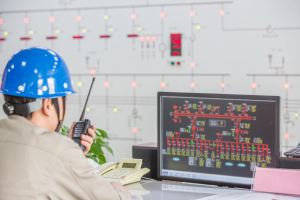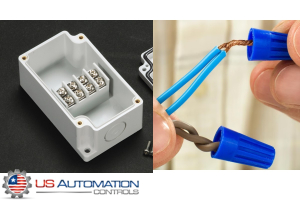Position Switches vs. Limit Switches: Discover the Key Differences

If you work around industrial machinery, chances are high that you’ve come across both position switches and limit switches. At first glance, they might seem like two names for the same sensor, but their purposes and capabilities can vary significantly. In this blog, we’ll clarify what makes each type unique, where they overlap, and why having the right device matters for your system. We’ll also explore related terms like the limit switch sensor, the proximity switch, and the proximity limit switch all of which play a critical role in modern automation and it's important to know them all.
Position Switches: What Are They?
Position switches are designed to detect and relay the precise location of a moving part within a mechanical or automated setup. They can rely on contact-based methods (physically touching the object) or non-contact technologies like magnetic or electrical fields. Because they often provide ongoing or incremental data (rather than a simple on/off state), position switches excel in scenarios where you need detailed feedback about a part’s whereabouts.
Typical Uses:
- Monitoring conveyor sections for alignment or jams.
- Tracking robotic arm movements at midpoints or various checkpoints.
- Verifying the status of doors, platforms, or other components before proceeding to the next operation.
Limit Switches: What Are They?
Limit switches generally focus on whether a component has reached a set boundary, such as the end of a track or the top/bottom of a machine’s range. A limit switch sensor often has a mechanical actuator that gets pressed to send a clear signal: “We’ve hit the limit; time to stop or change direction.” These sensors are frequently used for safety or final control measures.
Typical Uses:
- Halting a conveyor belt once a product reaches the end.
- Preventing elevator cabins from traveling beyond safe floors.
- Acting as a cutoff to avoid damage when machine arms overextend.
Position Switches and Limit Switches Together!
It’s common to see Position Switches and Limit Switches working in tandem. For instance, you might install a position switch to track ongoing motion along a production line, while a limit switch serves as the final boundary detector to ensure nothing goes past a safe point. This combination provides both mid-range monitoring and definitive endpoint protection.
Mechanical vs. Non-Contact (Proximity)
Mechanical Activation
Traditional limit switches typically include a mechanical arm or plunger that physically moves when contacted by a machine part. This design is straightforward and cost-effective but can wear down over time due to repeated impact or exposure to dust and debris.
Non-Contact Sensing
A proximity switch or proximity limit switch detects an object’s presence using magnetic, inductive, or capacitive fields with no physical contact required. This reduces wear and tear and can be especially helpful in dirty or high-speed environments.
Non-contact sensors also tend to have a longer lifespan since there are no mechanical parts to degrade.


Deciding Which Sensor Is Right for You
Deciding which sensor is more useful based on your needs depends on various factors such as:
Level of Detail Needed
If you only require a simple on/off alert once a part reaches the end, a limit switch is sufficient. On the other hand, if you need real-time tracking of a part's position, a position switch (especially a proximity-based model) might be a better fit.
Environmental Conditions
In rough environments think extreme temperatures, humidity, or heavy debris—non-contact devices like a proximity switch or proximity limit switch often hold up best. Mechanical switches may still work well in cleaner, less abrasive settings.
Budget Constraints
Basic limit switches can be more budget-friendly, making them ideal for straightforward tasks. If your application needs granular feedback and repeated cycle reliability, investing in more advanced position switches could save money on maintenance and downtime in the long run.
Ready to Upgrade Your Automation? Contact US Automation Controls!
When it comes to high-quality automation solutions, US automation controls stand out for its diverse selection of sensors. From classic limit switches to cutting-edge proximity switch designs, we offer reliable products that can elevate any production line.
Whether you need a robust limit switch sensor or a proximity limit switch for intricate real-time tracking, US automation controls have you covered with products that deliver both durability and precision.
Take the next step toward a safer, more efficient operation: explore the full range of position switches, limit switches, and other automation components. With expert support and top-tier quality, you can trust us to help you find exactly what you need for your industrial needs. Contact us now!


Frequently Asked Questions
What’s the difference between a Proximity switch and a Proximity limit switch?
A proximity switch detects the presence of an object within a certain range without physical contact, suitable for continuous monitoring. A proximity limit switch combines this non-contact sensing with boundary detection, triggering actions when an object reaches a specific limit without requiring direct interaction.
Can I use a position switch in place of a limit switch?
It depends on your specific requirements. Position switches offer detailed location tracking, whereas limit switches provide binary signals indicating the attainment of a specific point. A limit switch sensor might be more appropriate and cost-effective if your application only needs to detect when an object reaches a boundary.
Are proximity switches always better than mechanical switches?
“Better” depends on your specific needs. Proximity switches typically last longer in harsh or high-speed environments because they don’t rely on physical contact. Mechanical switches, on the other hand, are often more cost-effective if you have a relatively clean environment and don’t mind periodic maintenance.
What if my system requires both safety cutoffs and continuous monitoring?
That’s exactly where Position Switches and Limit Switches can work in tandem. You can use position switches for ongoing feedback and limit switches as your final boundary detection. This setup ensures precise control while still maintaining reliable safety.







